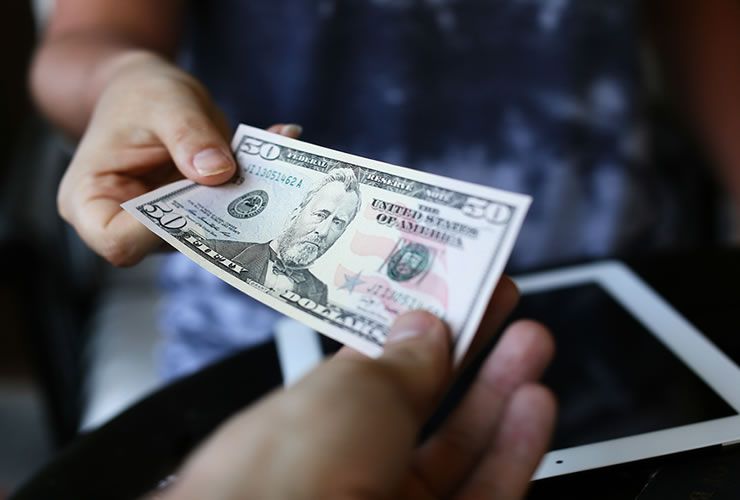US Dollar in the Driving Seat as Trump's Tax Plans on Track for 2017 Approval
- Written by: James Skinner

Tax reforms and an already-robust economic performance could soon see the Federal Reserve increase the speed it raises interest rates.
The Dollar could be set to advance on its major counterparts this week, according to strategists, now the Trump administration’s tax bill is on course to become law ahead of the New Year break.
Friday’s approval of the Senate tax bill clears the way for a joint committee of Senate and House republicans to merge their respective visions of what tax reform should look like, into one unified bill.
Once complete, the bill will have to be passed by congress and delivered to President Trump for signing.
“The Senate has impressed by introducing and passing the tax reform bill in an exceptionally short period,” says Chris Turner, head of foreign exchange strategy at ING Group. “The House and Senate versions of this bill now need to be reconciled, but this bill being signed into law by Christmas looks a possibility.”
Amendments to the details of the reforms are likely, and pitfalls in the road ahead are still possible during the weeks ahead however, Friday’s vote was seen as the main obstacle to the bill’s passing. Turner forecasts a strong performance from the Dollar in the week ahead.
“Tax reform progress is likely to be viewed at least initially as positive for the US dollar although market participants are clearly sceptical over the potential stimulative impact,” says Lee Hardman, a currency analyst at MUFG. “The boost to growth is expected to be relatively small in part because the US economy is near full-employment.”
Hardman notes economist polls putting the likely tax-boost to US GDP as somewhere in between 0.2% and 0.39% for 2018 and 2019, as grounds for thinking the reforms will have only a limited impact.
“A modest boost to domestic demand is unlikely to make up for the loss of tax revenues from planned tax cuts and will encourage a wider current account deficit,” Hardman writes, in a note Monday.
MUFG forecasts a weaker Dollar over the coming years but concedes the greenback Dollar could find support in the short term, if the tax package proves more stimulatory than the market currently expects.
Above: Pound-to-Dollar rate at weekly intervals. Captures Brexit vote collapse and subsequent trading.
“The representatives also have to agree on the expiring funding authorisation for the Federal government as otherwise there will be a government shutdown, which would no doubt cause renewed concerns on the FX market about the government’s ability to function and would at least put temporary pressure on the US dollar,” warns Esther Reichelt, an analyst at Commerzbank.
Republicans and Democrats in Washington have until Friday to agree an extension to the debt ceiling, or come up with an alternative measure to tide the Treasury over, otherwise lawmakers risk a government shutdown for the first time since 2013.
Divisions over immigration and health care policy make this a tall order and so the Friday deadline is a risk for the Dollar this week.
Above: USD/CHF at hourly intervals. Captures Friday sell-off.
Monday’s statements on the tax package come closely on the heels of the latest developments in the inquiry into alleged Russian interference in the US election, which hit the Dollar late on Friday.
General Mike Flynn, a national security adviser to President Trump shortly after his election, pled guilty Friday to a process offense as well as to providing false and misleading information to the Federal Bureau of Investigation.
“We should also see generally constructive US data this week culminating in a strong Non-Farm Payroll on Friday (ING is above consensus) and wages ticking back up to 2.7% YoY,” says ING’s Turner.
The consensus forecast suggests Friday’s non-farm payrolls report will show the economy adding close to 200,000 new jobs for November, while wages are also seen growing strongly.
These numbers, combined with expectations for success passing tax cuts before year-end, could see traders question market implied probabilities for additional rate hikes once into 2018, according to Turner.
“In theory then, loose fiscal and tight monetary policy should be sending the dollar firmer. Once again this story should largely be played out against the JPY, with possibility for 114 this week in USD/JPY,” adds Turner.
Current pricing suggests the Federal Reserve will raise interest rates twice during 2018. A reexamination of this idea could be good for the US Dollar over the coming weeks and months.
The US Dollar was quoted higher more or less across the board during early trading Monday, with its only loss coming in the face of the Canadian Dollar.
Sterling was quoted 0.25% lower at 1.3476 against the greenback, while the Euro-to-Dollar rate was marked down 0.34% at 1.1848. The USD/CAD rate was quoted 0.04% lower at 1.2672.
Get up to 5% more foreign exchange by using a specialist provider by getting closer to the real market rate and avoid the gaping spreads charged by your bank for international payments. Learn more here.




